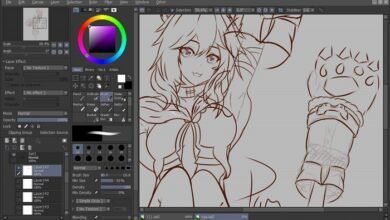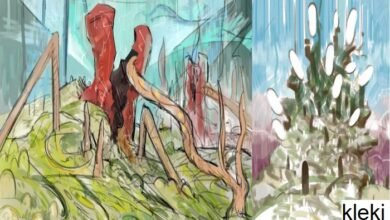Exploring PMUMALIN Burkina: A Deep Dive into the Key Features and Impact

In the heart of West Africa, Burkina Faso stands out not just for its rich cultural history, but also for its growing economic and technological sectors. One of the key factors driving this transformation is PMUMALIN Burkina, an innovative project that is making waves across various domains, from agriculture to digital infrastructure. This blog post will provide an in-depth look at PMUMALIN Burkina, examining its role, features, and the immense impact it is having on the nation and its people.
What is PMUMALIN Burkina?
PMUMALIN Burkina is an ambitious project that focuses on the modernization and development of various sectors in Burkina Faso. The acronym pmumalin stands for Programme de Modernisation et de Mise à Niveau des Secteurs Agricoles et Industriels (Program for Modernization and Upgrading of Agricultural and Industrial Sectors). This program is designed to accelerate Burkina Faso’s economic growth by fostering innovation in agriculture, industry, and infrastructure. Through a combination of local and international partnerships, PMUMALIN Burkina aims to enhance the productivity and competitiveness of these sectors, ultimately improving the quality of life for Burkinabe citizens.
The core of PMUMALIN Burkina is its focus on integrating modern techniques and technologies into traditional sectors, allowing for greater efficiency and sustainability. By combining the strengths of agricultural innovation with industrial growth, the program has already begun to show promising results in various parts of the country.
Key Features of PMUMALIN Burkina
PMUMALIN Burkina encompasses several key features that make it an impactful project for the country. These features are centered around improving the agricultural and industrial capacities of Burkina Faso, ensuring both sectors thrive in a modern, competitive global economy. Let’s explore some of the core components of PMUMALIN Burkina:
-
Agricultural Innovation: The program promotes the use of modern agricultural techniques and technologies. This includes the use of precision farming, improved irrigation systems, and the introduction of high-yield crop varieties. These innovations help increase the efficiency of farming, reduce waste, and improve food security for the population.
-
Industrial Modernization: PMUMALIN Burkina also focuses on upgrading industrial sectors, including the transformation of raw agricultural products into finished goods. The goal is to increase local production, reduce dependency on imports, and create jobs in various industries, ranging from food processing to textiles.
-
Infrastructure Development: An essential aspect of PMUMALIN Burkina is its focus on building and upgrading critical infrastructure. This includes roads, bridges, and transportation networks, which are vital for supporting trade and connecting rural areas to urban centers. Enhanced infrastructure ensures that goods and services can be distributed more efficiently, boosting the economy.
-
Environmental Sustainability: PMUMALIN Burkina places great emphasis on environmental conservation. The program encourages practices that promote soil health, water conservation, and the sustainable use of natural resources. This approach ensures that the country’s agricultural and industrial growth does not come at the expense of the environment.
-
Capacity Building and Training: A key feature of PMUMALIN Burkina is the emphasis on training and capacity building. The program invests in local human capital, providing training and skill development in modern farming techniques, industrial processes, and management practices. This ensures that the workforce is equipped with the necessary skills to thrive in a modernized economy.
How PMUMALIN Burkina Impacts the Economy
PMUMALIN Burkina plays a pivotal role in driving economic growth in Burkina Faso. By focusing on the modernization of agriculture and industry, the program is contributing to the creation of a more diversified economy. The agricultural sector, which has traditionally been the backbone of Burkina Faso’s economy, is being transformed through the introduction of new technologies and improved practices. This has led to an increase in agricultural productivity, which in turn boosts local economies, creates jobs, and improves food security.
Additionally, PMUMALIN Burkina’s focus on industrialization is helping to diversify the country’s economy. The processing of raw agricultural products into finished goods provides value-added industries that can compete both locally and internationally. By reducing reliance on imports and increasing local production, the program supports economic independence and fosters sustainable growth.
The infrastructural improvements made under PMUMALIN Burkina also have a direct economic impact. Better roads and transportation networks lower costs for businesses, increase trade, and stimulate economic activities. These improvements are especially important for rural areas, where access to markets has traditionally been limited.
The Role of Technology in PMUMALIN Burkina
A significant part of the success of pmumalin Burkina is its integration of technology. The program leverages cutting-edge innovations to bring modern agricultural and industrial techniques to Burkina Faso. These technological advancements are critical in ensuring that the program’s goals are achieved in a sustainable and efficient manner.
In agriculture, technology plays a key role in improving crop yields and minimizing losses. For example, precision farming tools that use satellite imagery and sensors are helping farmers monitor their crops more effectively, ensuring optimal conditions for growth. Additionally, the use of drones for monitoring soil health and assessing water needs has revolutionized the way farmers approach crop management.
In industry, the adoption of digital tools and automation is helping businesses improve productivity and reduce waste. Automation in manufacturing processes, coupled with data analytics, is enhancing decision-making, reducing costs, and enabling companies to scale their operations efficiently.
PMUMALIN Burkina’s emphasis on technological integration not only enhances productivity but also creates opportunities for innovation and entrepreneurship within the country. As more people gain access to modern technologies, there are increased opportunities for local businesses to develop and grow, further driving the nation’s economic transformation.
Environmental Sustainability and PMUMALIN Burkina
Environmental sustainability is a key pillar of PMUMALIN Burkina. The program recognizes that economic growth must be balanced with the need to protect the environment and preserve the natural resources of Burkina Faso. Sustainable practices are integrated into both the agricultural and industrial sectors, ensuring that development is achieved in an environmentally responsible manner.
In agriculture, PMUMALIN Burkina encourages the use of eco-friendly practices such as crop rotation, organic farming, and reduced use of chemical fertilizers and pesticides. These methods not only improve soil health and biodiversity but also ensure long-term sustainability by preserving vital natural resources.
On the industrial side, PMUMALIN Burkina promotes energy efficiency, waste reduction, and the use of renewable energy sources. By transitioning to greener production processes, industries can reduce their carbon footprint and mitigate the environmental impact of industrial activities. Additionally, the program supports the use of environmentally friendly packaging and recycling initiatives to minimize waste.
Through its focus on sustainability, PMUMALIN Burkina is helping to safeguard the future of Burkina Faso by ensuring that economic development does not come at the expense of the environment.
The Challenges Faced by PMUMALIN Burkina
Despite the promising developments driven by PMUMALIN Burkina, there are several challenges that the program continues to face. These challenges stem from both internal and external factors, including limited resources, political instability, and infrastructure gaps. While the program has made substantial progress, there are areas where further attention is needed to ensure long-term success.
-
Funding and Resource Allocation: Although PMUMALIN Burkina has received support from both the government and international partners, funding remains a significant challenge. Adequate resources are needed to fully implement all aspects of the program and ensure that it reaches the rural communities most in need.
-
Political Instability: Burkina Faso has faced political challenges in recent years, including periods of unrest and instability. These challenges can hinder the smooth implementation of large-scale projects like PMUMALIN Burkina, as political uncertainty can disrupt development plans and create barriers to progress.
-
Capacity Building: While PMUMALIN Burkina places a strong emphasis on capacity building, the sheer scale of the program means that there is a constant need for skilled workers and experts in various fields. Ensuring that the local workforce is adequately trained and equipped with the necessary skills is an ongoing challenge.
-
Infrastructure Gaps: While there have been significant improvements in infrastructure, rural areas still face challenges in terms of access to roads, electricity, and other basic services. Further investment in infrastructure is needed to ensure that the benefits of PMUMALIN Burkina reach every corner of the country.
Conclusion
PMUMALIN Burkina represents a bold and innovative approach to economic development in Burkina Faso. By focusing on modernization, industrialization, and sustainability, the program is laying the foundation for a prosperous future. While challenges remain, the progress made so far demonstrates the potential of this initiative to transform Burkina Faso into a more competitive and resilient economy.
With continued support, investment, and collaboration between local and international partners, PMUMALIN Burkina can pave the way for a more sustainable, inclusive, and prosperous future for the people of Burkina Faso.
MrHelpBook is your go-to platform for expert advice, guides, and solutions to everyday challenges. Whether you’re looking for tech support, educational resources, or professional tips, mrhelpbook provides reliable and up-to-date information. With a user-friendly interface and a vast library of helpful content, MrHelpBook ensures that you find answers quickly and efficiently. Stay informed, solve problems, and enhance your knowledge with MrHelpBook—your trusted source for assistance. Explore now and discover a world of solutions at your fingertips with MrHelpBook!
FAQs
1. What does PMUMALIN Burkina stand for?
PMUMALIN Burkina stands for Programme de Modernisation et de Mise à Niveau des Secteurs Agricoles et Industriels (Program for Modernization and Upgrading of Agricultural and Industrial Sectors).
2. How does PMUMALIN Burkina impact agriculture in Burkina Faso?
PMUMALIN Burkina promotes agricultural innovation by introducing modern farming techniques, such as precision farming and improved irrigation systems, leading to increased productivity and better food security.
3. What are the main sectors targeted by PMUMALIN Burkina?
The main sectors targeted by PMUMALIN Burkina include agriculture, industry, and infrastructure development, with a focus on modernization and sustainability.
4. Is technology a key component of PMUMALIN Burkina?
Yes, technology plays a crucial role in PMUMALIN Burkina, especially in agriculture and industry. The program incorporates digital tools, automation, and precision farming to enhance productivity and efficiency.
5. What are the challenges faced by PMUMALIN Burkina?
Some of the challenges faced by PMUMALIN Burkina include funding limitations, political instability, capacity building, and infrastructure gaps, particularly in rural areas.





